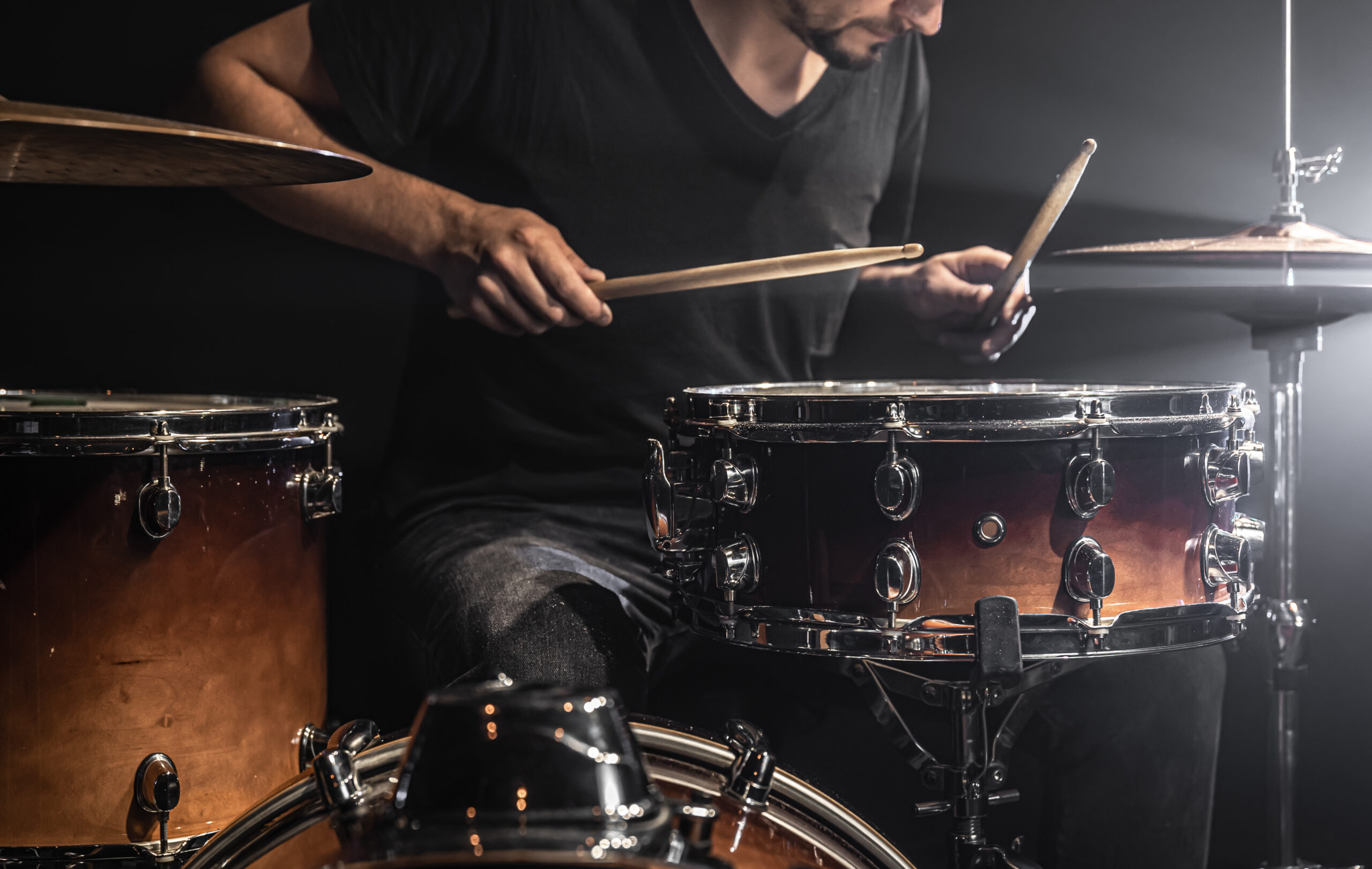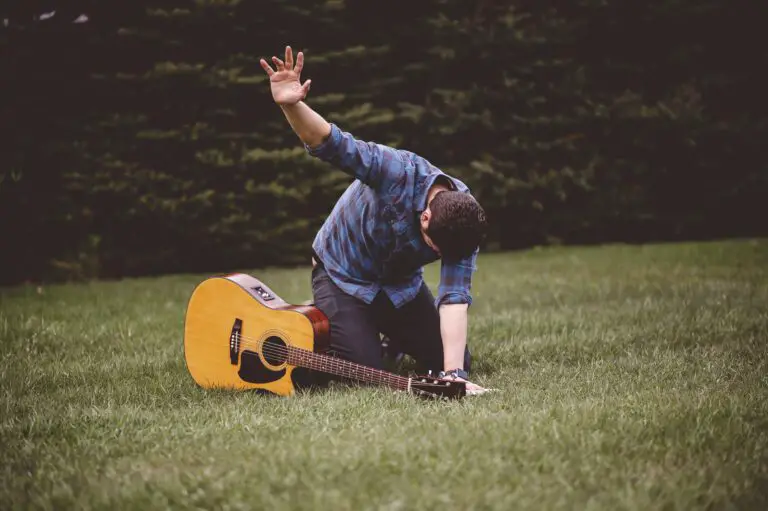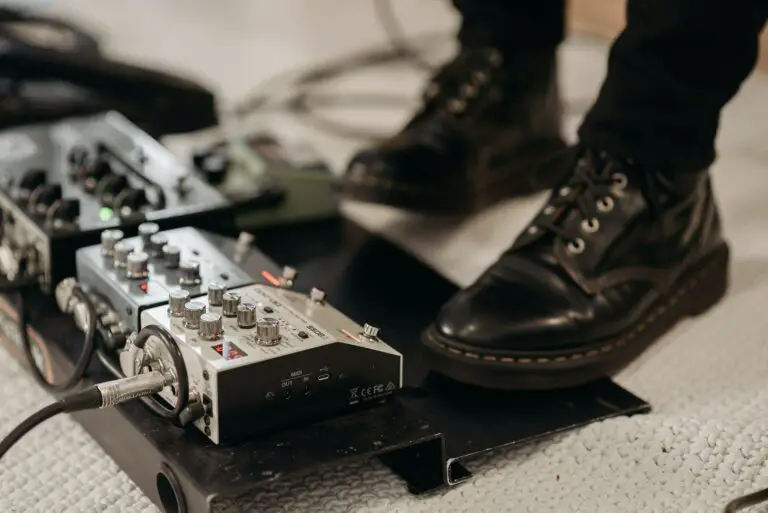Can Drumming Build Muscle?
Drumming is not just an artistic skill; it’s a physical activity that engages various muscle groups throughout your body.
But can it replace or complement your regular workout routine to help build muscle?
Drumming can’t build muscle like most strength training exercises, but it can help tone your muscles. It’s more accurate to view drumming as a cardio or calisthenic workout, compared to a strength workout.
In this article, we’ll examine the physical demands of drumming, looking closely at the muscle groups it engages.
We’ll compare it to traditional workouts, explore the correct techniques to prevent injuries, and offer some methods to help get the most out of your drumming session workouts.
The Physical Demands of Drumming
Drumming, whether for leisure or professional purposes, requires a considerable amount of physical exertion, engaging various core muscle groups.
Let’s delve into the specific areas of the body that are most utilized during drumming:
Core Engagement
The core, encompassing the muscles in your abdomen, hips, and lower back, is fundamentally engaged when you are drumming.
Maintaining balance on the drum stool and generating power for different drum strokes inherently involves your core muscles.
These muscles work continuously as you play, helping stabilize your body while allowing coordinated movements of your upper and lower body.
Upper Body Conditioning
The upper body plays a pivotal role in drumming, involving the arms, shoulders, and back.
Drummers frequently engage their upper body muscles to wield the drumsticks and to reach different drums set around them.
Regular drumming can condition these muscles over time, improving strength and endurance.
Moreover, mastering techniques such as the Moeller technique can facilitate more efficient use of the upper body, potentially fostering muscle development in the long run.
Leg and Foot Muscles
Drumming is not solely an upper body activity.
The use of pedals for the bass drum and hi-hat involves significant engagement of the leg and foot muscles.
From the calves to the small muscles in your feet, drumming offers a continuous workout for your lower body.
Maintaining speed and control over the pedals necessitates strength and endurance in these muscle groups, with seasoned drummers often showcasing notable muscle tone in their legs and feet.
What Muscle Groups Are Most Used In Drumming?
In order to really understand how drumming can help build muscle, it’s important to asses the specific muscle groups that are the most involved in your regular drumming sessions. These include:
Forearms and Wrist Muscles
Drumming requires a significant amount of control of the drumsticks.
This type of control really leans on one’s forearm and wrist strength. Regular drumming can help tone these muscles as they control the rapid and often complex stick movements required for different rhythms.
The constant grip and release of the sticks also offer a kind of resistance training, working the muscles dynamically and aiding in building strength and endurance over time.
Shoulder and Back Muscles
The shoulders and back muscles are in constant use as a drummer reaches to different parts of the drum set.
These muscles provide the stability and control needed to play consistently, especially during extended sessions.
Drummer’s need excellent posture so that they can maneuver their bodies to hit all of the drums on their drum set, which in turn requires significant back and shoulder strength.
Abdominals and Obliques
While perhaps less obvious, the abdominal and oblique muscles play a crucial role in drumming.
These core muscles help maintain a drummer’s posture, allowing for a strong, balanced seating position.
Engaging your core also facilitates the rapid, coordinated movements required to play complex rhythms.
Therefore, drumming can indeed be a workout for your midsection, helping to build and tone these muscles through regular engagement.
Drumming as a Form of Cardio
While drumming is often associated with rhythm and coordination, it also offers a substantial cardiovascular workout. In this section, we explore how drumming can increase your heart rate and help you burn calories:

Heart Rate and Drumming
Engaging in a session of intense drumming can significantly increase your heart rate, sometimes rivaling the rates seen in moderate aerobic exercises.
The continuous movement and energetic performance can keep the heart rate elevated, promoting better cardiovascular health.
Regular drumming sessions can contribute to a stronger heart and improved stamina, much like how cardio workouts do.
Burn Calories While Playing
Playing the drums isn’t just about creating music; it’s a physical activity that can help you burn calories.
Depending on the intensity and duration of your drumming session, you can burn a substantial number of calories, akin to what one might burn during a brisk walk or even a jog.
By engaging multiple muscle groups and maintaining a high level of energy throughout a performance, drummers can turn their practice sessions into a calorie-burning workout, marrying the joy of music with the benefits of physical exercise.
Genres Of Drumming And Muscle Growth
| Drumming Style | Primary Muscles Engaged | Impact |
|---|---|---|
| Rock/Pop | Forearms, Shoulders, Calves | Rock and pop drumming often involve steady, repetitive beats and may require continuous engagement of the forearm muscles for striking and shoulder muscles for maintaining arm positions. The calves are engaged through the persistent use of bass drum pedals. |
| Jazz | Wrists, Shoulders, Ankles | Jazz drumming, often characterized by lighter, more intricate rhythms, might demand more from the wrists for delicate cymbal work and snare rolls. Shoulders and ankles also get a workout, the former for moving around the kit and the latter for the nuanced pedal work. |
| Metal | Upper Arms, Thighs | Metal drumming, renowned for its rapid, aggressive beats, significantly engages upper arm muscles due to forceful strikes and thighs for double bass drumming and fast pedal work. |
| Latin | Core, Hips, Forearms | Latin drumming typically involves complex rhythms and can engage the core muscles for stability while playing congas and bongos. Hip and forearm muscles are also worked due to the lateral and rotational movements common in Latin percussion. |
| Funk | Wrists, Lower Back | The syncopated, groovy rhythms of funk may emphasize the wrist muscles for precise snare and hi-hat work, while the lower back works to stabilize the body during the dynamic playing styles. |
| Marching Percussion | Back, Shoulders, Legs | Marching while playing engages the back and shoulder muscles due to carrying drums. Leg muscles are worked not just from marching, but also from maintaining a stable playing position while moving. |
Case Studies on Drumming and Muscle Growth
It’s hard to exactly ‘prove’ that drumming can or can’t build muscle, but there are some pretty intriguing studies that substantiate the claim beyond personal anecdotes from drummers (who let’s face it, are likely already fit in their day-to-day lives anyway).
Researchers have mapped the muscle groups engaged during drumming, using data to affirm that drumming can indeed serve as a form of physical exercise, benefiting not just the musicians’ artistic expression but their physical well-being too.
Clem Burke Drumming Project
One great example is from the Clem Burke Drumming Project.
The Clem Burke Drumming Project is a fascinating endeavor that shed light on the physical exertion and demands of drumming.
Clem Burke is the drummer of the band Blondie, and he collaborated with universities in the UK to understand the energy exertion and physical demands of drumming.
Initiated in the mid-2000s, the project brought out the following key findings through a series of studies:
- High Energy Expenditure: The studies found that professional drummers could expend a significant amount of energy during a performance, equivalent to a professional football player. This underlined drumming as an intense physical activity.
- Heart Rate: Drummers can have heart rates going up to 190-200 beats per minute during a performance, emphasizing the cardio workout they get while drumming.
- Stamina and Endurance: Drumming for extended periods, especially during live performances, requires a high level of endurance. The studies highlighted that drummers could experience levels of physical exertion that were intense and sustained, much like athletes.
- Psychological Benefits: Apart from physical benefits, the project also highlighted potential psychological benefits such as improved mood and reduced anxiety, though these aspects were not the primary focus of the project.
- Calorie Burn: The project noted that drumming could lead to substantial calorie burn, contributing to weight management and overall physical health. This was in line with drumming being a physically demanding activity.
While the project primarily highlighted the physically intense nature of drumming, it also opened doors for further exploration into the nuanced benefits of drumming, encompassing physical health and psychological well-being.
Department of Music Theory, Soonchunhyang University, South Korea
This study investigated the muscle activation patterns in the upper arm during drum playing.
The researchers used surface electromyography (EMG) to record the electrical activity of the muscles. They found that the muscles of the upper arm were more active during drum playing than during a resting condition.
Key findings from this study include:
- The muscles of the upper arm are more active during drum playing than during a resting condition.
- The level of muscle activation is highest during the striking motion and decreases during the recovery motion.
- The muscle activation patterns differ depending on the type of drum played.
Final Thoughts
Drumming is not just an art form but also a viable way to tone muscle and improve physical fitness.
The activity engages several muscle groups and requires substantial energy expenditure, making it a good workout.
As we have seen, drumming can increase heart rate and help burn calories, adding to its benefits as a physical activity.
Therefore, drummers not only hone their craft but can also maintain a level of physical fitness through their practice.









